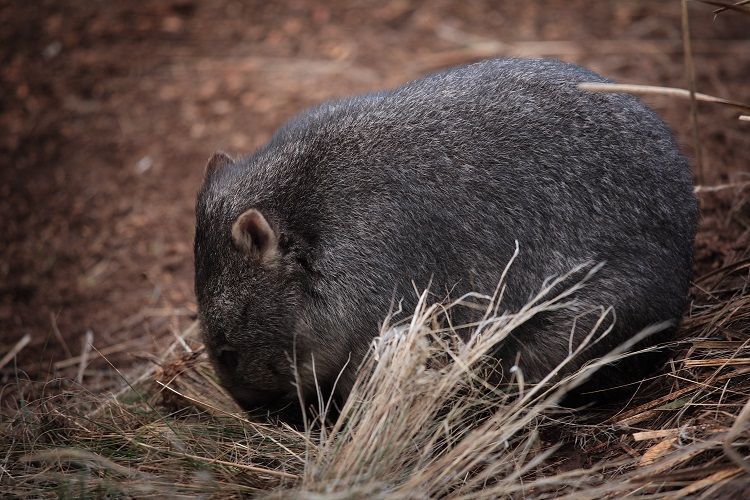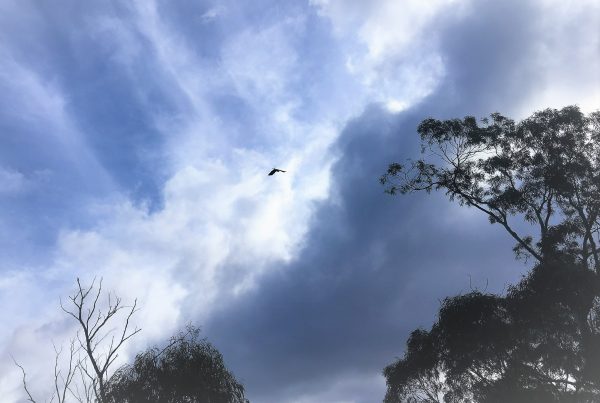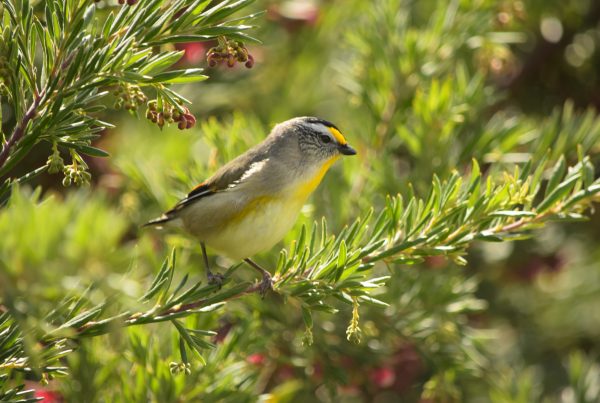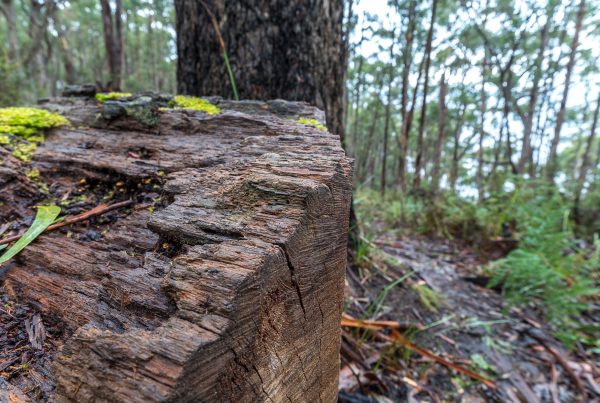
The Peninsula is home of one of Australia’s iconic animals, the Tasmanian wombat. The bare-nosed wombat was once found throughout southeastern Australia including Tasmania, but due to settlement of the land, the habitat for the animals decreased and it appears these wombats are not that common anymore.
We are very fortunate on the Peninsula that these wombats find an ideal environment here. The wombats use the pristine bush and pockets of grass areas as their habitat and feed on the various grounds including the woodlands, shrub-lands and sloping coastal areas. They seem to prefer this wetter, forested and rocky region which is cooler compared to other regions. It is estimated that the population density could be up to 30 wombats in favourable conditions when enough food is around.
You might come across these creatures when you are out on one of the walking tracks on the property or see them grazing on the lawns at dusk or dawn.
Watch out for poo droppings along the tracks. The wombat is highly territorial and uses its cube-shaped poo to mark its territory. They deposit poo outside their burrows and on top of rocks and logs, where they are exposed, visible and more easily found by other wombats. The distinctive shape is an advantage as the flat sides of the cubes ensure they do not roll off their precarious locations.
Observations on the Peninsula showed that there was mange present in a small number of wombats. The preventative measures put in place during recent months helped the wombats in their recovery from infestation and avoided any further spreading of the mange mites.
The plight of wombats with mange has been an ongoing concern for many years. Sarcoptic mange causes a protracted painful death in Bare-nosed Wombats. The parasitic mite, which burrows under the skin of its host, causes thick, crusty scabs and hair loss. The skin lesions can split open causing secondary infections and become fly blown. Unless mange is treated the infestation progresses and eventually the wombat is so severely compromised it dies.
Individual wombats can be treated for mange. While this is relatively easy for animals in care, its more challenging to treat animals in the wild, especially wombats which are typically nocturnal and live underground.
The Burrow Flap method is an easy way to treat wombats with mange as the flaps can be placed and monitored during daylight hours without disturbing the wombat. There is no need to catch or touch the wombat as it self-medicates when leaving or returning to its burrow ensuring there is no stress for the wombat.
The burrow flaps are made from an ice-cream container lid with a bottle top inserted and are easy to set up. A dose of Cydectin® is placed in the bottle top. The burrow flap is suspended from a simple wire frame which has been positioned at the entrance to the burrow. As the wombat enters or leaves the burrow, the flap tilts and the medication trickles onto the wombats back. The treatment needs to occur once a week for 8 weeks, then fortnightly for another 4 treatments.
Wildlife lovers, landowners, bushwalkers, in fact anyone interested in helping wombats with mange can help to spread the word and make sure the message reaches the greater community. Our aim is to play a part of eradicating mange on the Peninsula and stop the suffering of the wombats. Caring for wildlife and protecting wombats starts with people, people just like you. Together we will make a difference.
If you see any wombat while you are on bush walks and you think they could have mange, please pass this information on to the Peninsula Experience team.
The future of the wombat is in our hands.




